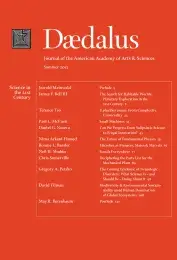The Future of Fundamental Physics
Fundamental physics began the twentieth century with the twin revolutions of relativity and quantum mechanics, and much of the second half of the century was devoted to the construction of a theoretical structure unifying these radical ideas. But this foundation has also led us to a number of paradoxes in our understanding of nature. Attempts to make sense of quantum mechanics and gravity at the smallest distance scales lead inexorably to the conclusion that space-time is an approximate notion that must emerge from more primitive building blocks. Furthermore, violent short-distance quantum fluctuations in the vacuum seem to make the existence of a macroscopic world wildly implausible, and yet we live comfortably in a huge universe. What, if anything, tames these fluctuations? Why is there a macroscopic universe? These are two of the central theoretical challenges of fundamental physics in the twenty-first century. In this essay, I describe the circle of ideas surrounding these questions, as well as some of the theoretical and experimental fronts on which they are being attacked.
Ever since Newton realized that the same force of gravity pulling down on an apple is also responsible for keeping the moon orbiting the Earth, fundamental physics has been driven by the program of unification: the realization that seemingly disparate phenomena are in fact different aspects of the same underlying cause. By the mid-1800s, electricity and magnetism were seen as different aspects of electromagnetism, and a seemingly unrelated phenomenon–light–was understood to be the undulation of electric and magnetic fields.
Relativity and quantum mechanics pushed the trend toward unification into territory far removed from ordinary human experience. Einstein taught us that space and time are different aspects of a single entity: space-time. Energy and momentum are united analogously, leading to the famous equivalence between mass and energy, E = mc2, as an immediate consequence. Einstein further realized that space-time is not a static stage on which physics unfolds, but a dynamic entity that can curve and bend. Gravity is understood as a manifestation of space-time curvature. This new picture of space-time made it possible to conceive of ideas that were impossible to articulate in the Newtonian picture of the world. Consider the most important fact about cosmology: we live in an expanding universe. The distance between two galaxies grows with time. But the galaxies are not rushing apart from each other into some preexisting space, as though blown out of an explosion from some common center. Rather, more and more space is being generated between the galaxies all the time, so from the vantage point of any one galaxy, the others appear to be rushing away. This picture, impossible to imagine in Newton’s universe, is an inevitable consequence of Einstein’s theory.
. . .
